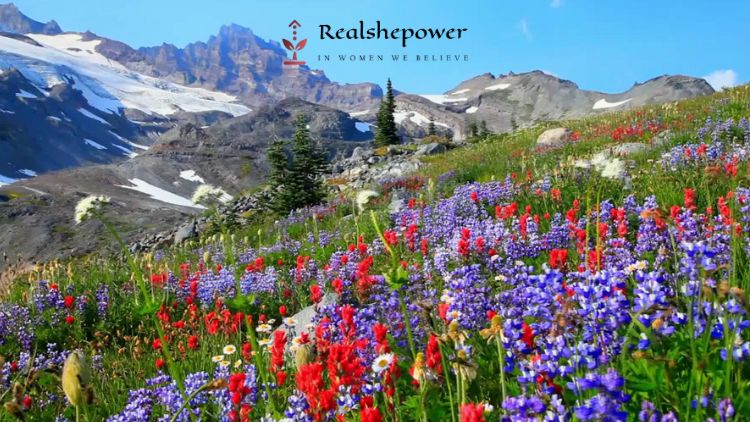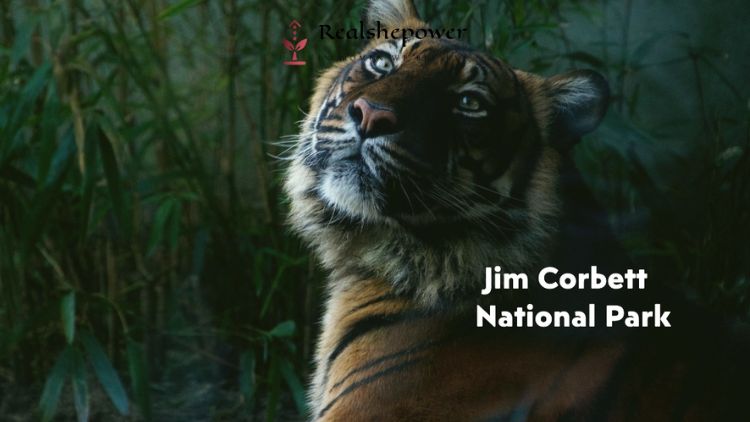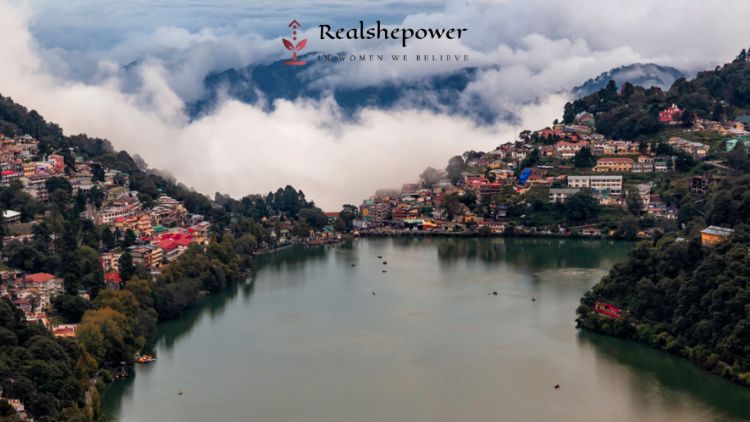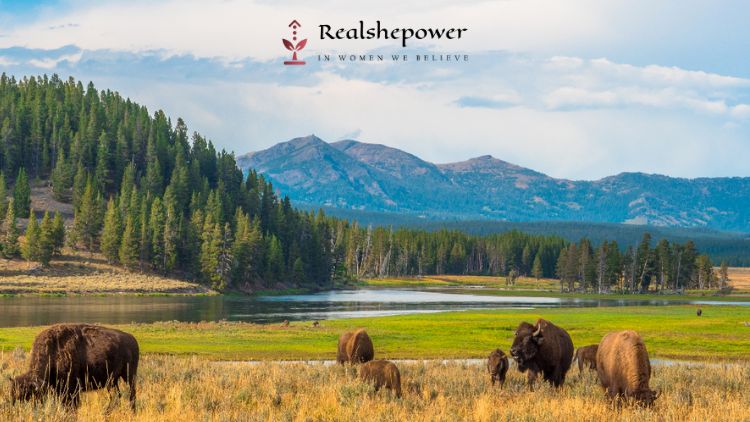Exploring Uttarakhand: 8 Surprising Gems Beyond the Ordinary


Welcome to the enchanting realm of Uttarakhand, where every corner is adorned with natural wonders, cultural treasures, and fascinating tales waiting to be unraveled. While this Himalayan state is celebrated for its towering peaks and spiritual sanctuaries, there’s a whole world of hidden gems lying just beneath the surface. Join us on a journey as we uncover 8 surprising facets of Uttarakhand that will ignite your sense of wonder and leave you yearning for more.
Table of Contents
1. Land of the Gods: Where Myth Meets Reality
Uttarakhand isn’t just a state; it’s a living, breathing testament to ancient myths and timeless legends. Step foot in this mystical land, and you’ll find yourself enveloped in the aura of divinity that permeates every corner. Here, amidst the towering peaks and verdant valleys, the boundaries between the mortal realm and the divine blur, giving rise to a palpable sense of spirituality.
From the sacred waters of the Ganges flowing through its heart to the lofty Himalayan peaks that pierce the heavens, Uttarakhand is home to a pantheon of gods and goddesses who have found solace in its tranquil embrace. Whether you’re wandering through the bustling streets of Haridwar, where the evening aarti fills the air with chants and incense, or trekking to the ancient temples of Kedarnath and Badrinath nestled amidst snow-capped peaks, you’ll find yourself humbled by the palpable presence of the divine.
But Uttarakhand’s status as the “Land of the Gods” isn’t just a product of myth and folklore; it’s a reflection of the deep-rooted reverence and devotion that permeates its culture. Here, spirituality isn’t just a way of life; it’s the very essence of existence. Every rock, every tree, every stream is imbued with a sense of sacredness, reminding visitors of their interconnectedness with the cosmos.
So, as you traverse the mystical landscapes of Uttarakhand, let yourself be transported to a realm where the divine and the earthly converge, and where every step is a pilgrimage, every breath a prayer. Welcome to the Land of the Gods, where myth meets reality, and where the journey of the soul begins anew with every sunrise.
2. Char Dham Yatra: A Pilgrimage of Spiritual Renewal

Embarking on the Char Dham Yatra is not just a journey; it’s a pilgrimage of the soul, a sacred odyssey that traverses the realms of faith, devotion, and transcendence. The Char Dham, comprising the revered sites of Yamunotri, Gangotri, Kedarnath, and Badrinath, beckons pilgrims from far and wide to embark on a spiritual quest like no other.
- Yamunotri: The journey begins at the source of the Yamuna River, nestled amidst the craggy peaks of the Garhwal Himalayas. Pilgrims trek through rugged terrain and icy streams to reach the Yamunotri Temple, where they pay homage to Goddess Yamuna, seeking her blessings for purity and prosperity.
- Gangotri: Next on the sacred itinerary is Gangotri, the birthplace of the holy Ganges River. Set against the backdrop of snow-capped mountains, the Gangotri Temple is a sanctum of serenity and reverence. Devotees offer prayers to Goddess Ganga, bathing in the icy waters of the Bhagirathi River to cleanse their sins and attain moksha.
- Kedarnath: The journey ascends to the lofty heights of Kedarnath, where Lord Shiva is worshipped in his formidable form as the ‘Lord of the Kedar Khand.’ Perched at an altitude of 3,583 meters, the Kedarnath Temple is a symbol of unwavering devotion, its stone walls echoing with chants of ‘Har Har Mahadev’ as pilgrims pay homage to the divine.
- Badrinath: The final destination of the Char Dham Yatra is Badrinath, the abode of Lord Vishnu in his form as Badrinarayan. Nestled in the shadow of the Neelkanth Peak, the Badrinath Temple exudes an aura of divine grace and transcendence. Pilgrims immerse themselves in prayers and rituals, seeking the blessings of the Supreme Being for spiritual enlightenment and liberation.
As pilgrims traverse the rugged terrain and perilous paths of the Himalayas, they are not just embarking on a physical journey but a spiritual odyssey of self-discovery and transformation. The Char Dham Yatra is a testament to the enduring power of faith, uniting devotees from diverse backgrounds in a shared quest for divine grace and spiritual renewal.
Also read: 10 Incredible temples in India with Rich History and Spectacular Aura
3. Valley of Flowers: A Botanical Haven

Nestled within the confines of the Chamoli district in Uttarakhand, the Valley of Flowers beckons with its ethereal beauty and unparalleled floral diversity. This UNESCO World Heritage Site is not just a valley; it’s a living canvas painted with the vibrant hues of nature’s palette. Spread over an expanse of 87.5 square kilometers, this enchanting valley sits at an altitude of 3,658 meters above sea level, cradled by the majestic Himalayan peaks.
A Symphony of Colors
Step into the Valley of Flowers, and you’ll find yourself immersed in a botanical paradise unlike any other. From the delicate blooms of blue poppies to the fiery red hues of rhododendrons and the serene whites of Himalayan daisies, the valley is a symphony of colors that captivates the senses and stirs the soul. Over 500 species of wildflowers carpet the landscape, creating a kaleidoscope of hues that dance in harmony with the gentle breeze.
A Botanist’s Delight
For botany enthusiasts and nature lovers alike, the Valley of Flowers is a treasure trove of botanical wonders. Rare and endemic species of flora, including the elusive Brahma Kamal (Saussurea obvallata), orchids, saxifrages, and gentians, adorn the meadows and rocky slopes, offering a glimpse into the rich biodiversity of the region. The valley’s unique microclimate, characterized by a combination of alpine and sub-alpine ecosystems, provides a conducive environment for the growth of these floral marvels.
Beyond Flowers: Fauna and Flora
But the valley’s allure extends beyond its floral splendor. It’s also home to a diverse array of fauna, including the elusive snow leopard, musk deer, Himalayan black bear, and numerous species of birds and butterflies. As you traverse the meandering trails that wind through the valley, keep an eye out for these enchanting creatures, whose presence adds to the valley’s mystique and allure.
A Sacred Connection
In addition to its natural beauty, the Valley of Flowers holds deep spiritual significance for the indigenous communities of Uttarakhand. According to local folklore, the valley is believed to be associated with Lord Hanuman, who is said to have visited the region in search of the mythical Sanjeevani herb during the Ramayana era. This sacred connection lends an aura of reverence to the valley, making it not just a botanical wonderland but also a place of pilgrimage and contemplation.
Unveiling Nature’s Masterpiece
As you explore the Valley of Flowers, you’ll find yourself awestruck by nature’s masterful artistry and the sheer abundance of life that thrives in this pristine sanctuary. Whether you’re a botany enthusiast, a nature lover, or simply a seeker of beauty and tranquility, the valley promises an experience that will leave an indelible imprint on your heart and soul. So, lace up your hiking boots, breathe in the crisp mountain air, and embark on a journey to unveil the secrets of this botanical haven nestled in the heart of Uttarakhand.
4. Jim Corbett National Park: Where the Wild Roams Free

Established in 1936 as Hailey National Park, it was later renamed in honor of the legendary hunter-turned-conservationist Jim Corbett. Spanning over 500 square miles across the districts of Nainital and Pauri Garhwal, this wilderness sanctuary is not just a refuge for endangered species but a living testament to the delicate balance between humans and nature.
Home to a rich diversity of flora and fauna, Jim Corbett National Park is a haven for wildlife enthusiasts and nature lovers alike. Step into its pristine forests, and you’ll find yourself immersed in a world where the call of the wild echoes through the dense foliage. Here, elusive tigers prowl stealthily through the undergrowth, while herds of majestic elephants traverse ancient migratory routes. Keep your eyes peeled, and you might catch a glimpse of the graceful leopard, the playful otter, or the elusive Himalayan black bear.
But Jim Corbett National Park is not just about its charismatic megafauna; it’s also a sanctuary for avian wonders. With over 600 species of birds, including the majestic crested serpent eagle, the colorful kingfisher, and the elusive great hornbill, it’s a birdwatcher’s paradise. Spend a quiet morning by the Ramganga River, and you’ll be treated to a symphony of birdcalls as the feathered denizens of the park go about their daily routines.
Beyond its rich biodiversity, Jim Corbett National Park is steeped in history and lore. Explore the ruins of ancient temples hidden amidst the verdant forests, and you’ll uncover tales of bygone eras and forgotten kingdoms. Visit the Corbett Museum, housed in the heritage bungalow where Jim Corbett once lived, and you’ll gain insight into the life and legacy of this pioneering conservationist.
But perhaps the most enduring legacy of Jim Corbett National Park lies in its role as a custodian of nature’s wonders. As visitors embark on safari adventures through its rugged terrain, they not only witness the splendor of the wild but also gain a deeper appreciation for the importance of conservation. Through initiatives like community-based ecotourism and sustainable development projects, the park strives to ensure that future generations will continue to marvel at the wonders of the natural world.
So, whether you’re a wildlife enthusiast, a nature lover, or simply a curious traveler seeking adventure, Jim Corbett National Park beckons with its untamed beauty and timeless allure. Step into its embrace, and you’ll discover a world where the wild roams free, and every moment is a celebration of the wonders of life.
5. Chipko Movement: Embracing Trees, Empowering Communities

The Chipko Movement stands as a testament to the power of grassroots activism and environmental consciousness. Originating in the early 1970s in the village of Mandal, Uttarakhand, this movement was a response to rampant deforestation and the exploitation of natural resources by commercial logging companies. The term “Chipko” translates to “hug” or “embrace,” symbolizing the villagers’ peaceful yet resolute act of physically embracing trees to protect them from being felled.
Led predominantly by women, the Chipko Movement emerged as a powerful force for change, challenging established norms and raising awareness about the importance of forest conservation. These courageous women, often from marginalized rural communities, bravely confronted the authorities and loggers, demanding an end to the indiscriminate destruction of their natural habitat.
The movement gained widespread attention and support, both nationally and internationally, shedding light on the critical issue of environmental degradation and the need for sustainable development practices. It inspired similar movements across India and around the world, sparking a global conversation about the rights of indigenous communities and the preservation of biodiversity.
The Chipko Movement not only succeeded in protecting countless trees but also empowered local communities to assert their rights and take ownership of their environment. It led to policy changes and the implementation of conservation measures, paving the way for a more ecologically conscious approach to development.
Today, the legacy of the Chipko Movement lives on, serving as a source of inspiration for environmental activists and conservationists worldwide. It reminds us of the profound connection between humanity and nature, and the collective responsibility we bear to safeguard our planet for future generations.
6. Charas: The Enigmatic World of Cannabis in Uttarakhand

Delve into the enigmatic world of Charas, a term that evokes intrigue and fascination in the hills of Uttarakhand. Charas refers to the high-quality cannabis resin cultivated and harvested in select regions of the state. While its production and distribution are illegal, the cultural and religious significance of cannabis plants runs deep in certain communities, particularly in the remote areas of the Parvati Valley and other secluded pockets of Uttarakhand.
The cultivation of cannabis, known locally as “ganja,” has been a traditional practice in these regions for centuries, intertwined with rituals, festivals, and indigenous healing practices. For many inhabitants, cannabis is revered as a sacred plant with medicinal properties, used in religious ceremonies and spiritual rituals to invoke divine blessings and transcendental experiences.
However, amidst its cultural significance lies a complex web of legal and social implications. While cannabis cultivation for religious and cultural purposes is tolerated to some extent, the illegal production and trade of Charas pose significant challenges for law enforcement agencies and local authorities. The allure of quick profits and the demand for Charas in domestic and international markets have fueled a clandestine industry, often leading to conflicts between law enforcement agencies and local communities.
Despite its legal status, the cultivation and trade of Charas continue to thrive in the shadows, shaping the socio-economic landscape of certain regions in Uttarakhand. While some argue for its legalization as a means to regulate and tax its production, others advocate for stricter enforcement measures to curb its illegal trade and promote alternative livelihoods for affected communities.
The story of Charas in Uttarakhand is a complex tale of tradition, spirituality, legality, and socio-economic dynamics. It underscores the need for a nuanced approach to drug policy that balances cultural sensitivities, public health concerns, and socio-economic realities. As Uttarakhand grapples with these complexities, the enigmatic world of Charas remains a subject of intrigue and debate, weaving its way through the cultural fabric of the Himalayan landscape.
7. Hill Stations: Where Tranquility Meets Timeless Charm

Uttarakhand’s allure isn’t confined to its towering peaks and sacred rivers; it extends to its picturesque hill stations, each offering a tranquil escape from the chaos of urban life. These hill stations are like hidden gems nestled amidst the verdant folds of the Himalayas, where time seems to stand still, and every moment is imbued with serenity and beauty.
Mussoorie, often referred to as the “Queen of Hill Stations,” exudes an old-world charm reminiscent of the colonial era. Stroll down the Mall Road, lined with quaint shops and eateries, or take a cable car ride to Gun Hill for panoramic views of the surrounding valleys. The soothing climate and scenic vistas make Mussoorie a perennial favorite among travelers seeking a refreshing getaway.
Nainital, nestled around the shimmering Naini Lake, captivates visitors with its tranquil beauty and idyllic setting. Boating on the emerald waters of the lake, exploring the bustling markets of Mallital and Tallital, and trekking to viewpoints like Snow View and Tiffin Top are just a few of the experiences that await in this charming hill station.
Lansdowne, tucked away in the Garhwal region, offers a serene retreat far from the tourist crowds. With its verdant forests, meandering trails, and colonial-era architecture, Lansdowne beckons travelers seeking solitude and natural beauty. Visit the War Memorial, stroll along the Bhulla Lake, or simply unwind amidst the pine-scented air, soaking in the peaceful ambiance of this hidden gem.
Each hill station in Uttarakhand has its own unique charm and character, offering travelers a glimpse into the timeless beauty of the Himalayas. Whether you’re seeking adventure, relaxation, or simply a break from the hustle and bustle of everyday life, these hill stations promise an unforgettable experience amidst nature’s bounty.
8. Rajaji National Park: A Biodiverse Haven in the Heart of Uttarakhand

Spanning across the districts of Haridwar, Dehradun, and Pauri Garhwal, this expansive sanctuary is named after the eminent freedom fighter, C. Rajagopalachari, and holds within its embrace a treasure trove of natural wonders waiting to be explored.
Discovering Wildlife Diversity:
Rajaji National Park is a sanctuary for a diverse array of flora and fauna, making it a paradise for wildlife enthusiasts and nature lovers alike. As you venture into its depths, you’ll encounter an impressive variety of species, including the majestic Asian elephant, elusive Bengal tiger, regal leopard, and playful langur monkeys. The park’s rich avian population also offers birdwatchers a treat, with over 400 species of birds, including the vibrant Indian hornbill and the majestic crested serpent eagle, gracing the skies.
Exploring Ecological Marvels:
Beyond its charismatic megafauna, Rajaji National Park boasts a mosaic of ecosystems that support a remarkable diversity of plant life. From dense Sal forests and verdant grasslands to meandering rivers and tranquil streams, each habitat harbors its own unique flora and contributes to the park’s ecological richness. Keep your eyes peeled for rare and endemic species of plants, including the aromatic Agarwood, vibrant orchids, and medicinal herbs that thrive in this biodiverse haven.
Conservation Initiatives:
Rajaji National Park is not just a sanctuary for wildlife; it’s also a bastion of conservation efforts aimed at preserving its precious natural heritage. The park is actively involved in initiatives such as habitat restoration, anti-poaching patrols, and community-based conservation projects to safeguard its flora and fauna. Visitors can witness firsthand the dedication of park authorities and local communities towards ensuring the long-term sustainability of this ecological hotspot.
Engaging Activities:
For those seeking an immersive wilderness experience, Rajaji National Park offers a myriad of activities to satisfy your adventurous spirit. Embark on exhilarating jungle safaris to spot elusive wildlife in their natural habitat, or opt for tranquil nature walks along the park’s scenic trails, where you can soak in the sights and sounds of the forest. Birdwatching, river rafting, and camping are also popular activities that allow visitors to forge a deeper connection with the natural world.
Unlocking Uttarakhand’s Secrets:
Uttarakhand, with its diverse landscapes, rich cultural heritage, and hidden wonders, continues to captivate the imagination of travelers seeking authentic experiences and spiritual rejuvenation. From the snow-capped peaks of the Himalayas to the lush green valleys and sacred rivers, each facet of this enchanting state tells a story of resilience, reverence, and natural beauty. So pack your bags, embark on a journey of discovery, and let Uttarakhand weave its magic around you.
